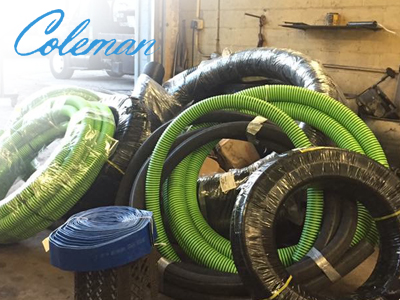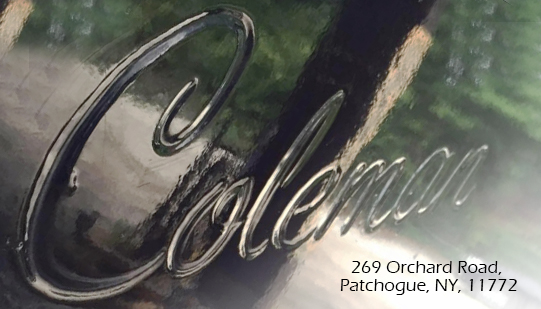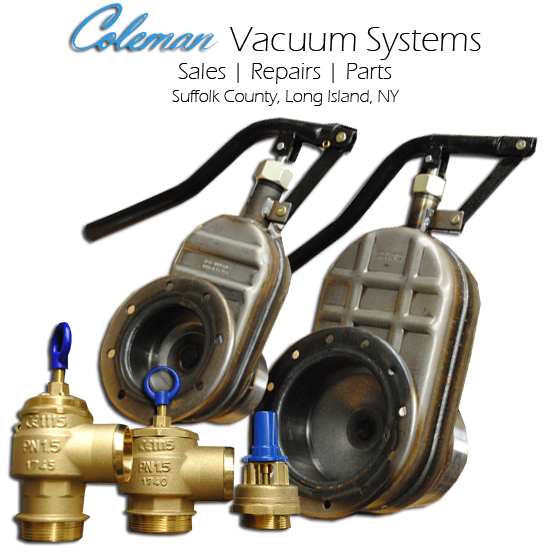Educating Customers with Resources & Drainage Systems 101 - Coleman Vacuum Systems, ColemanVac.com
Managing Storm Water
Maintaining and improving the cleanliness of the many beautiful streams, rivers, lakes and ponds in our surroundings is the responsibility of every citizen. You may not think about it often, but waste material, both liquid and solid, left on the ground can be washed away with rain water into our network of storm sewers and ultimately be deposited in nearby natural bodies of water. This network of rivers, streams and ponds are a dynamic, interconnected system and materials can end up a long way from where they were first discarded. When these liquid and solid waste materials are deposited untreated in natural waterways, they can have a profound affect on the aquatic life and add to sediment buildup thus eroding our waterways over time.
Even seemingly small quantities of products we use everyday that cause no direct harm can become a problem. Environmental problems tend to evolve slowly over time and cause damage before we realize anything is wrong. Small amounts of contaminants can pollute a large amount of water. For example, one quart of oil can contaminate up to two million gallons of water.
Storm water is water from rain or melting snow that doesn't soak into the ground but runs off into waterways. It flows from rooftops, over paved areas and bare soil, and through sloped lawns while picking up a variety of materials on its way. As it flows, storm water runoff collects and transports soil, animal waste, salt, pesticides, fertilizers, oil and grease, debris and other potential pollutants. The quality of runoff is affected by a variety of factors and depends on the season, local meteorology, geography and upon activities which lie in the path of the flow.

About Storm Water
Some of the effects that uncontrolled storm water can have are:
- Nutrients such as phosphorus and nitrogen picked up from soils can promote the overgrowth of algae, deplete oxygen in the waterway and be harmful to other aquatic life.
- Toxic chemicals from automobiles, sediment from construction activities and careless application of pesticides, herbicides and fertilizers threaten the health of the receiving waterway and can kill fish and other aquatic life.
- Bacteria from animal wastes and illicit connections to sewerage systems can make nearby lakes and bays unsafe for wading, swimming and the propagation of edible shellfish.
- According to an inventory conducted by the United States Environmental Protection Agency (EPA), half of the impaired waterways are affected by urban/suburban and construction sources of storm water runoff.
What You Can Do
Here are some ways that you can contribute to pollution prevention and good practices:
- Contact All Storm Drains Inc.
- Contact Murphy's Cesspool & Septic Service
- Contact Coleman Vacuum Systems for Vacuum Truck Equipment
Outdoor activities
- Take note of nearby storm drains and take precautions to prevent any liquid or loose material from entering them. If necessary, plug or berm drains to prevent entry of contaminants.
- If your activity uses water, divert the runoff to a green or vegetated area.
- Sweep the area and pick up any loose material when your activity is completed, and don't wash anything down the drain.
- Prevent sediment from entering the drain by use of a fabric bag filter. Contact All Storm Drains Inc. ahead of time if you think you may need the drain protected in some way.
- Never pour any liquids down outside drains, including beverages, liquid food wastes, grease, wash water or any other seemingly non-harmful liquid - remember, these are not natural to our waterways.
Trash Disposal
Dumpsters are a common source of pollutants, especially if they contain any liquid or semi-liquid wastes. Never place liquids into the regular trash or directly into a Dumpster! Instead, follow these guidelines for disposal of liquid waste:
- Liquids that will not have an adverse affect on the county water treatment plant, such as: liquid food waste, sewage, boiler blow downs, sump pump drainage, should be discharged to drains inside buildings.
- Chemicals and other liquid products that can be toxic should be collected and containerized for proper disposal.
Sewers & Storm Water Drainage Systems
In municipalities, there are three types of systems that handle sewage and storm water: sanitary sewers, storm water drainage systems, and combined sewer systems. A sanitary sewer system is designed to transport wastewater from homes, offices, restaurants, and shops to the wastewater treatment plant (WWTP), where it is treated before being discharged to surface water bodies. Storm water drainage systems are designed to transport surface runoff from rainstorms and snow melts into lakes, rivers, streams, and ponds. Water that enters the storm water drainage system is not treated before being discharged into surface waters. The third type of water system, the combined sewer system, is a combination of both the sanitary and storm water systems. A combined sewer carries sanitary sewage and storm water to be treated together at the WWTP. The combined sewer has the ability to treat storm water runoff, however, during wet weather when storm water flows are high, the combination of storm water and wastewater may overwhelm the treatment plant. In this case, untreated sewage may be discharged directly into a surface water body.





Comments
Post a Comment